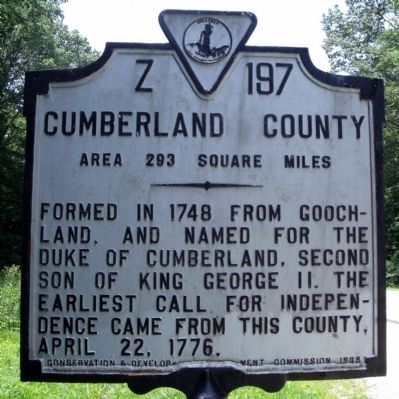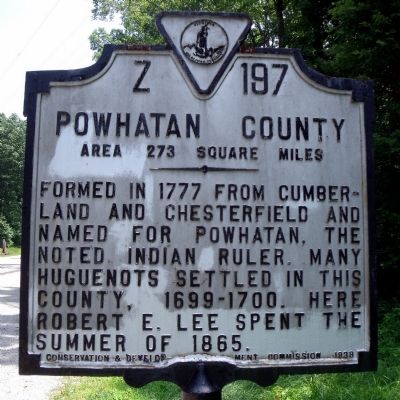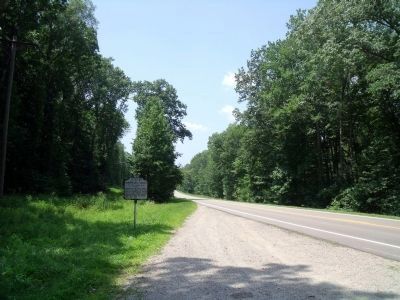Near Cumberland in Cumberland County, Virginia — The American South (Mid-Atlantic)
Cumberland County / Powhatan County
Cumberland County. Area 293 square miles. Formed in 1748 from Goochland, and named for the Duke of Cumberland, second son of King George II. The earliest call for independence came from this county, April 22, 1776.
Powhatan County. Area 273 square miles. Formed in 1777 from Cumberland and Chesterfield and named for Powhatan, the noted Indian ruler. Many Huguenots settled in this county, 1699-1700. Here Robert E. Lee spent the summer of 1865.
Erected 1938 by Conservation & Development Commission. (Marker Number Z-197.)
Topics and series. This historical marker is listed in these topic lists: Colonial Era • Native Americans • Political Subdivisions • Settlements & Settlers. In addition, it is included in the Virginia Department of Historic Resources (DHR) series list. A significant historical date for this entry is April 22, 1856.
Location. 37° 32.733′ N, 78° 6.701′ W. Marker is near Cumberland, Virginia, in Cumberland County. Marker is on Anderson Highway (U.S. 60) 0.6 miles west of Mosby road, on the left when traveling west. Touch for map. Marker is in this post office area: Cumberland VA 23040, United States of America. Touch for directions.
Other nearby markers. At least 8 other markers are within 8 miles of this marker, measured as the crow flies. Derwent (approx. 4 miles away); Mosby’s Tavern / Cumberland Old Courthouse (approx. 4.4 miles away); a different marker also named Derwent (approx. 4˝ miles away); a different marker also named Cumberland County / Powhatan County (approx. 4.7 miles away); Muddy Creek School (approx. 5.4 miles away); Dunlora Academy (approx. 5.7 miles away); Hamilton High School (approx. 7.8 miles away); Rosenwald School at Cartersville (approx. 7.9 miles away).
Credits. This page was last revised on July 6, 2021. It was originally submitted on July 26, 2009, by Bernard Fisher of Richmond, Virginia. This page has been viewed 997 times since then and 92 times this year. Photos: 1, 2, 3. submitted on July 26, 2009, by Bernard Fisher of Richmond, Virginia.


